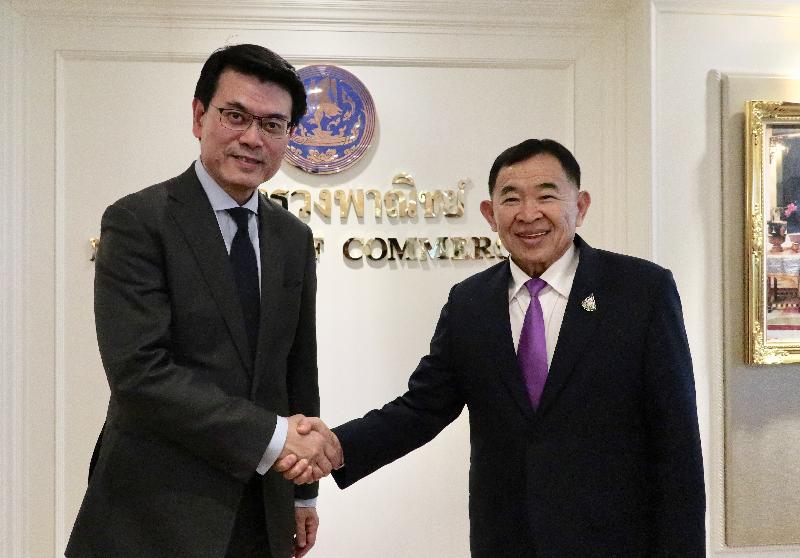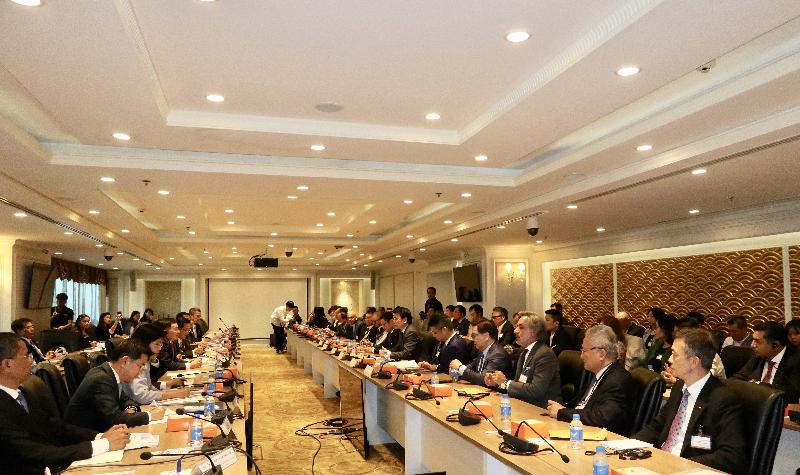LCQ16: Police welfare related funds
Following is a question by the Dr Hon Fernando Cheung and a written reply by the Secretary for Security, Mr John Lee, in the Legislative Council today (November 27):
Question:
Regarding the Police Welfare Fund, the Police Children’s Education Trust and the Police Education and Welfare Trust, will the Government inform this Council of the following during the period between June 1 and October 31 this year:
(1) the details of the incomes of the three funds (set out in Tables 1 to 3);
Table 1: Income of the Police Welfare Fund
| Income | Amount |
| (i) General Fund | |
| Donations | |
| Government grant | |
| Hire of police services | |
| Hire of police holiday facilities | |
| Interest income from fixed deposits | |
| Commission on sale of souvenirs by contractor | |
| Miscellaneous receipts | |
| Commission from Staff Purchase Scheme contractor | |
| Exchange gain | |
| (ii) Police Band Fund | |
| Hire of Police Band | |
| Donations | |
| (iii) Sir Shiu-kin Tang Donation Fund (1985) | |
| Interest income from fixed deposit | |
| (iv) Music Bursary Fund | |
| Sale of compact discs | |
Table 2: Income of the Police Children’s Education Trust
| Income | Amount |
| Donations | |
| Interest Income | |
| Dividend income | |
| Gain on disposal of investments | |
| Net exchange gain |
Table 3: Income of the Police Education and Welfare Trust
| Income | Amount |
| Donations | |
| Interest income | |
| Dividend income | |
| Net exchange gain |
(2) the details of the expenditures of the three funds (set out in Tables 4 to 6); and
Table 4: Expenditure of the Police Welfare Fund
| Expenditure | Amount |
| (i) General Fund | |
| Formation welfare grants | |
| Grants to Police Tactical Units | |
| Grants to various councils, associations, etc. | |
| Recurrent expenses on police holiday facilities | |
| Grants to police/civilian officers in hardship | |
| Refreshments for police officers on special duties | |
| Police sports activities expenses | |
| Staff relation expenses | |
| Grants on death of serving police/civilian officers or pensioners |
|
| Summer scholarships for police officers’ children | |
| Healthy Lifestyle Strategy Activities | |
| Seminars and Resettlement Training Courses | |
| Grants to junior police officers for further education | |
| Others | |
| Exchange loss | |
| (ii) Police Band Fund | |
| Distribution of band fees | |
| Purchase and repair of musical instruments | |
| Royalties to Composers and Authors Society of Hong Kong Limited |
|
| Laundry expenses for bandsmen engaged in private functions |
|
| Miscellaneous expenses | |
| Entertainment expenses | |
| (iii) Sir Shiu-Kin Tang Donation Fund (1985) | |
| General welfare expenses | |
| (iv) Music Bursary Fund | |
| Expenses on training bandsmen | |
| Miscellaneous expenses | |
| (v) Further Education Fund | |
| Further education grants to police officers | |
Table 5: Expenditure of the Police Children’s Education Trust
| Expenditure | Amount |
| Bursaries | |
| Treasurer’s remuneration | |
| Sundry expenses | |
| Net exchange loss |
Table 6: Expenditure of the Police Education and Welfare Trust
| Expenditure | Amount |
| Bursaries | |
| Treasurer’s remuneration | |
| Sundry expenses | |
| Net exchange loss |
(3) the details of the donations received by the three funds (set out in tables of the same format as Table 7)?
Table 7
| Date of receipt of donations | Name of donors/ donating organisations |
Amount of donations | Reasons for donation |
Reply:
President,
The Police Welfare Fund was established under the Police Force Ordinance (PFO) (Cap 232) and is administered in accordance with the Police Force (Welfare Fund) Regulation (Cap 232C). According to PFO, the Police Welfare Fund may be used for purposes including but not limited to providing and maintaining amenities for the use and enjoyment of the beneficiaries; compensating police officers, auxiliary officers and civilian officers for extra services provided by them; making loans to beneficiaries; making grants, allowances and gifts to beneficiaries.
The Police Children’s Education Trust and the Police Education and Welfare Trust were established and are administered in accordance with the Police Children’s Education Trust Ordinance (Cap 1119) and the Police Education and Welfare Trust Ordinance (Cap 1120) respectively. The Police Children’s Education Trust shall be applied for the following objects: the provision of assistance in, and facilities for, the higher education of the children of junior police officers and for purposes ancillary thereto; and the provision for any such children who are deserving of opportunities for the furtherance of studies. The Police Education and Welfare Trust shall be applied for the following objects: the provision of assistance in, and facilities for, the general education of the children of police officers of all ranks of the Hong Kong Police Force and of the Hong Kong Auxiliary Police Force; the provision for any such children who are deserving of opportunities for the furtherance of studies; and welfare purposes of general benefit to some or all members of either or both such Forces.
The annual incomes (including donations) and expenditures of the three funds above shall be audited by the Director of Audit in accordance with the relevant legislation, before their statements of accounts are submitted to the Legislative Council (LegCo). The relevant statements of accounts have been uploaded to LegCo’s website.
My reply to the questions raised by the Member is as follows:
(1) and (2) As the 2019-20 financial year has not yet ended, and the incomes (including donations) and expenditures of the three funds have yet been audited, we are not able to provide the accounts of the three funds for this financial year. In line with the established practice, the relevant statements of accounts for 2018-19 will be submitted to LegCo in December this year. The accounts of the three funds for 2017-18 with breakdowns requested in the question are tabulated at Annex.
(3) The Police Welfare Fund maintains donation information which members of the public may inspect through the established mechanism put in place by the Police Welfare Fund Management Committee. In this connection, they may approach the secretariat concerned. For the other two funds, there has been no mechanism for public inspection of donation information. Without the consent of the donors, the relevant information would not be disclosed. read more




